#grapefruit essential oil
Explore tagged Tumblr posts
Text

so in love with this nervine salve i made last night for my apothecary, it’s infused with lavender, rose, elderflower, and holy basil, with a touch of pink grapefruit essential oil to give it a shimmery fragrant finish. so comforting and grounding✨
#herbalism#flowers#healing#herbs#apothecary#plant based#plants#herbcraft#lavender#rose#holy basil#tulsi#tulsi tea#dried herbs#infused oil#herbal oil#essential oils#pink grapefruit#grapefruit#fragrance#perfume#salve#herbalism community#self healing#beauty#faith#positivity#spirituality#love#witchy
3 notes
·
View notes
Text
Grapefruit Pink Essential Oil
Get Grapefruit Pink Essential Oil From SVA Naturals. We provide various essential oils in bulk. We focus on quality, leaving no chance for complaints. Visit our website and buy our product in bulk without any worries.

0 notes
Text
#aroma magic#skin care#beauty care#essential oil#face wash#face care#face wash for men#natural face wash#grapefruit face wash#aroma magic face wash#aroma magic sri lanka
0 notes
Text
White Grapefruit Extract Essential Oils
Introduction
In the ever-evolving world of skincare and wellness, essential oils and high-quality creams have taken center stage for their numerous benefits and natural origins. Among these, white grapefruit extract essential oils and Mekrama Legacy Cream stand out for their unique properties and efficacy. This comprehensive guide delves into the myriad benefits of white grapefruit extract essential oils, explores the science behind Mekrama Legacy Cream, and explains how these products can enhance your skincare and wellness routines.
White Grapefruit Extract Essential Oils
The Origins of White Grapefruit
White grapefruit, a citrus fruit known for its tart and tangy flavor, is a hybrid between a sweet orange and a pomelo. Native to the subtropical regions, particularly in the Caribbean, the fruit has been celebrated for its refreshing taste and numerous health benefits. The essential oil derived from white grapefruit peel has gained popularity for its uplifting aroma and therapeutic properties.
Extraction Process
The extraction of white grapefruit essential oil involves a process called cold pressing, where the oil is mechanically separated from the peel. This method preserves the oil’s natural properties, ensuring that it retains its beneficial compounds such as limonene, myrcene, and pinene.
Chemical Composition
White grapefruit essential oil is rich in various compounds that contribute to its unique aroma and therapeutic effects:
Limonene: This is the dominant compound, known for its antioxidant and anti-inflammatory properties.
Myrcene: Provides analgesic and anti-inflammatory benefits.
Pinene: Offers anti-inflammatory and bronchodilator effects.
Benefits of White Grapefruit Essential Oils
1. Aromatherapy
The refreshing and invigorating scent of white grapefruit essential oil makes it a popular choice in aromatherapy. It can help alleviate stress, reduce anxiety, and enhance mood. Diffusing the oil in your living space can create a positive and energizing atmosphere.
2. Skin Care
White grapefruit essential oil is celebrated for its skin benefits. It can help combat oily skin, reduce acne, and improve the overall appearance of the skin. Its astringent properties make it an excellent choice for toning and tightening the skin.
3. Weight Management
Some studies suggest that the aroma of grapefruit essential oil can help suppress appetite and promote weight loss. Inhaling the scent before meals may help reduce food cravings and enhance the body’s metabolism.
4. Antimicrobial Properties
White grapefruit essential oil has antimicrobial properties that can help fight off bacteria and fungi. This makes it a valuable addition to natural cleaning products and personal care items.
5. Detoxification
The oil can aid in detoxifying the body by promoting lymphatic drainage and improving circulation. It helps flush out toxins, which can enhance overall health and well-being.
How to Use White Grapefruit Essential Oils
Diffusion
Add a few drops of white grapefruit essential oil to a diffuser to fill your home with its refreshing aroma. This can help uplift your mood and create a rejuvenating environment.
Topical Application
Mix the essential oil with a carrier oil such as coconut or jojoba oil before applying it to your skin. This can help with conditions like acne, oily skin, and cellulite. Always perform a patch test to ensure no allergic reactions occur.
Bath
Add a few drops of the oil to your bathwater for a relaxing and detoxifying experience. The aroma will help you unwind, while the oil works on your skin.
Inhalation
Inhale the scent directly from the bottle or from a cotton ball for a quick mood boost and to help curb appetite.
Safety Precautions
While white grapefruit essential oil offers numerous benefits, it’s important to use it safely:
Dilution: Always dilute the oil with a carrier oil before applying it to the skin to avoid irritation.
Photosensitivity: Grapefruit oil can increase your skin’s sensitivity to sunlight. Avoid sun exposure for at least 12 hours after applying the oil.
Patch Test: Conduct a patch test to check for allergic reactions.
Consultation: If you are pregnant, nursing, or have any medical conditions, consult a healthcare provider before using the oil.
Mekrama Legacy Cream
The Science Behind Mekrama Legacy Cream
Mekrama Legacy Cream is a premium skincare product formulated to address various skin concerns and enhance overall skin health. It combines advanced scientific research with natural ingredients to create a potent formula that delivers visible results.
Key Ingredients and Their Benefits
1. White Grapefruit Extract
The inclusion of white grapefruit extract in Mekrama Legacy Cream brings the numerous benefits of this citrus powerhouse to your skincare routine. It helps brighten the skin, reduce acne, and promote a radiant complexion.
2. Hyaluronic Acid
Hyaluronic acid is a powerful hydrating agent that can hold up to 1000 times its weight in water. It helps keep the skin plump, hydrated, and youthful-looking by retaining moisture and preventing dryness.
3. Vitamin C
Vitamin C is known for its antioxidant properties and its ability to brighten the skin. It helps reduce the appearance of dark spots, even out skin tone, and boost collagen production.
4. Peptides
Peptides are short chains of amino acids that are essential for collagen production. They help firm the skin, reduce the appearance of fine lines and wrinkles, and improve skin elasticity.
5. Natural Oils
The cream contains a blend of natural oils such as jojoba, argan, and rosehip oil. These oils nourish the skin, provide essential fatty acids, and enhance the skin’s barrier function.
Benefits of Mekrama Legacy Cream
1. Hydration
Mekrama Legacy Cream provides intense hydration, leaving the skin soft, smooth, and supple. The hyaluronic acid and natural oils work together to lock in moisture and prevent dryness.
2. Anti-Aging
The cream’s powerful blend of ingredients helps reduce the appearance of fine lines, wrinkles, and age spots. Peptides and vitamin C promote collagen production, improving skin firmness and elasticity.
3. Brightening
White grapefruit extract and vitamin C work synergistically to brighten the skin and reduce hyperpigmentation. Regular use of the cream results in a more even and radiant complexion.
4. Acne Prevention
The antimicrobial properties of white grapefruit extract help prevent acne breakouts. The cream also helps control excess oil production, keeping the skin clear and blemish-free.
5. Antioxidant Protection
The antioxidants in the cream protect the skin from environmental stressors such as pollution and UV radiation. This helps prevent premature aging and maintains the skin’s health.How to Use Mekrama Legacy Cream
Daily Application
Use Mekrama Legacy Cream twice daily, in the morning and evening, for best results. Apply a small amount to clean, dry skin and gently massage it in using upward motions.
Combination with Other Products
Mekrama Legacy Cream can be combined with other skincare products for a comprehensive routine. Use it after cleansing and toning, and before applying sunscreen in the morning or other serums and treatments at night.
Conclusion
White grapefruit extract essential oils and Mekrama Legacy Cream are powerful additions to any skincare and wellness routine. The essential oil’s refreshing aroma and therapeutic benefits, combined with the advanced formulation of Mekrama Legacy Cream, offer a holistic approach to achieving healthy, radiant skin.
By incorporating these products into your daily routine, you can enjoy the numerous benefits they provide, from enhanced protection and hydration to anti-aging and brightening effects. Remember to use these products safely and consistently to achieve the best results. Embrace the natural power of white grapefruit and the scientific excellence of Mekrama Legacy Cream for a truly transformative skincare experience.
0 notes
Text
I looked, tried, hoped, found and lost you
I looked for you in the lavender, patchouli, cloves, sandalwood, orange, grapefruit, and the star anise.
I tried to find you in the essential oils of candles, body lotions, soap, perfume, gardens, and within nature.
I hoped your essence, perhaps your spirit would be there within the many scents that make up one short life.
I found the ghosts of so many people who never answered to the name that belonged to you.
I lost you in the many ways I tried to find you, for you had moved on to give me the strength to go on.
#candkwords#gippsland poets#poetry#original poetry#poemsbyme#spilledwords#poetry story#poem#poets and poetry#poetry of tumblr#patchouliessentialoil#grapefruit#perfume#sandalwood#orange#ground cloves#star anise#i lost you#essential oils#love poems
1 note
·
View note
Text
Foods You Can Eat Instead of Taking Vitamins and Supplements 🍎🥥🥦🥑🍌
Vitamin A: Carrots, sweet potatoes, spinach, kale.
B Vitamins: Whole grains, meat, eggs, nuts, legumes.
Vitamin B1 (Thiamine): Whole grains, legumes, nuts, pork, fortified cereals.
Vitamin B2 (Riboflavin): Dairy products, lean meats, almonds, leafy greens. Vitamin B3 (Niacin): Poultry, fish, nuts, legumes, whole grains.
Vitamin B5 (Pantothenic Acid): Meat, poultry, eggs, avocado, whole grains.
B6: Chicken, turkey, fish, bananas, chickpeas.
Folate (Vitamin B9): Leafy greens, legumes, citrus fruits, fortified grains.
Vitamin B12: Animal products (meat, fish, dairy), fortified plant-based foods.
Vitamin C: Citrus fruits, strawberries, bell peppers.
Vitamin D: Fatty fish (salmon, mackerel), fortified dairy products, sunlight.
Vitamin E: Sunflower seeds, almonds, vegetable oils, nuts, spinach, broccoli.
Vitamin F (Essential Fatty Acids): Fatty fish, flaxseeds, chia seeds, walnuts.
Vitamin H (Biotin): Eggs, nuts, sweet potatoes, salmon, avocado.
Vitamin K: Leafy greens (kale, spinach), broccoli, Brussels sprouts.
Vitamin K2: Fermented foods (natto, cheese), animal products, leafy greens.
Vitamin L1 (Anthranilic Acid): Cruciferous vegetables (cabbage, cauliflower), legumes.
Vitamin P (Bioflavonoids): Citrus fruits, berries, onions, green tea.
Vitamin Q (Ubiquinone): Fatty fish, organ meats, spinach, cauliflower.
Vitamin T (L-carnitine): Red meat, poultry, fish, dairy products.
Vitamin U (S-Methylmethionine): Cabbage, broccoli, Brussels sprouts.
Betaine: Beets, spinach, whole grains, seafood.
Boron: Fruits (apples, pears), legumes, nuts, avocado.
Calcium: Dairy products, leafy greens (kale, collard greens), almonds.
Carnosine: Beef, poultry, fish.
Carnitine: Red meat, dairy products, fish.
Catechins: Green tea, black tea, dark chocolate.
Choline: Eggs, liver, beef, broccoli, soybeans.
Creatine: Red meat, fish, poultry.
Chromium: Broccoli, whole grains, nuts, brewer's yeast.
Chondroitin: Cartilage-rich foods (bone broth, connective tissue of meat).
Copper: Shellfish, nuts, seeds, organ meats, lentils.
Coenzyme Q10 (CoQ10): Fatty fish, organ meats, nuts, soybean oil.
Ellagic Acid: Berries (strawberries, raspberries), pomegranates.
Glucosinolates: Cruciferous vegetables (cabbage, broccoli, cauliflower).
Glucosamine: Shellfish (shrimp, crab), bone broth, animal connective tissues.
Glutamine: Dairy products, meat, poultry, cabbage.
Inositol: Citrus fruits, beans, nuts, whole grains.
Iodine: Seafood, iodized salt, dairy products.
Iron: Red meat, poultry, beans, lentils, spinach.
L-Theanine: Mushrooms, black tea, white tea, guayusa.
Lignans: Flaxseeds, whole grains, cruciferous vegetables.
Lutein and Zeaxanthin: Leafy greens (spinach, kale), corn, eggs.
Lycopene: Tomatoes, watermelon, pink grapefruit.
Magnesium: Spinach, nuts, seeds, whole grains, beans.
Manganese: Nuts, seeds, whole grains, leafy greens, tea.
Melatonin: Cherries, grapes, tomatoes.
Omega-3 fatty acids: Flaxseeds, chia seeds, walnuts, fatty fish.
PABA (Para-Aminobenzoic Acid): Whole grains, eggs, organ meats.
Pantothenic Acid (Vitamin B5): Meat, poultry, fish, whole grains, avocado
Pectin: Apples, citrus fruits, berries, pears.
Phosphorus: Dairy products, meat, poultry, fish, nuts.
Prebiotics: Garlic, onions, leeks, asparagus, bananas (unripe), oats, apples, barley, flaxseeds, seaweed.
Probiotics: Yogurt, kefir, fermented foods (sauerkraut, kimchi).
Potassium: Bananas, oranges, potatoes, spinach, yogurt.
Polyphenols: Berries, dark chocolate, red wine, tea.
Quercetin: Apples, onions, berries, citrus fruits.
Resveratrol: Red grapes, red wine, berries, peanuts.
Rutin: Buckwheat, citrus fruits, figs, apples.
Selenium: Brazil nuts, seafood, poultry, eggs.
Silica: Whole grains, oats, brown rice, leafy greens.
Sulforaphane: Cruciferous vegetables (broccoli, Brussels sprouts), cabbage.
Taurine: Meat, seafood, dairy products.
Theanine: Green tea, black tea, certain mushrooms.
Tyrosine: Meat, fish, dairy products, nuts, seeds.
Vanadium: Mushrooms, shellfish, dill, parsley, black pepper.
Zeatin: Whole grains, legumes, nuts, seeds.
Zinc: Oysters, beef, poultry, beans, nuts, whole grains.
#women health#health and wellness#healthy diet#healthy living#healthy lifestyle#womens health#health#health tips#wellness#levelupjourney#dream girl guide#dream girl tips#dream girl journey#health is wealth#clean girl aesthetic#clean girl#it girl#nutrition#supplements#organic#food#nutrients#healthyhabits#healthy life tips#self love journey#self love#dream life#dream girl
2K notes
·
View notes
Text
Essential oils toxic to cats
Cats are particularly sensitive to essential oils, and even small amounts can be toxic to them.
Here is a list of essential oils that are generally considered toxic to cats:
Tea Tree Oil (Melaleuca oil)
Pennyroyal Oil
Wintergreen Oil
Pine Oil
Clove Oil
Eucalyptus Oil
Citrus Oil (Lemon, Orange, Grapefruit)
Cinnamon Oil
Thyme Oil
Peppermint Oil
Oregano Oil
Ylang Ylang Oil
Bergamot Oil
Sweet Birch Oil
Garlic Oil
Garlic Extract
Onion Oil
Onion Extract
Nutmeg Oil
Chamomile Oil
Anise Oil
Juniper Oil
Mustard Oil
Citronella Oil
Pine Needle Oil
Bay Leaf Oil
Cassia Oil
Cajeput Oil
Lemon Grass Oil
Geranium Oil
Remember, this list is not exhaustive, and there may be other essential oils that could be harmful to cats. It's crucial to keep these oils and any other potentially toxic substances out of reach of your feline companions.
If you suspect your cat has been exposed to an essential oil or is displaying any unusual symptoms, it's important to contact a veterinarian immediately.
#essential oils#essential oils toxic to cats#witchblr#witchcore#witchcraft#witchlife#white witch#beginner witch#witch tips#grimoire#green witch#spirituality#book of shadows#cats
1K notes
·
View notes
Text
More Writing Notes: Cocktails

Traditionally, a cocktail (or a mixed drink) is a beverage that contains a mixture of alcoholic spirits combined with other ingredients, such as simple syrups, tonics, bitters, fruit juice, club soda, or other fizzy waters.
Today you can also find a variety of nonalcoholic spritz cocktails that combine alcohol-free spirits with mixer ingredients.
6 Mixology Tools
Bar spoon: long-handled spoon that makes it easy to stir drinks in tall glasses or pitchers.
Citrus juicer: extracts juice from citrus fruits and vegetables by shredding the flesh of the food item.
Cocktail glasses: there are several different shapes of cocktail glasses, and each corresponds to a different type of mixed drink.
Cocktail shaker: A shaker is a tall container (usually metal) that makes it easy for bartenders to shake crushed ice and cocktail ingredients together to quickly cool down the beverage.
Cocktail strainer: The strainer fits over the shaker and lets you pour the cocktail into the glass while leaving behind the ice and any other ingredients, like herbs, that you used to shake the cocktail.
Muddler: When a cocktail recipe includes directions to muddle ingredients, usually fruit or herbs, it means to smash them to release the essential oils and fruit pulp. A muddler is a small handheld rod that lets you easily muddle ingredients in a cocktail glass.
Some Popular Cocktails
Bloody Mary: This classic brunch cocktail contains vodka mixed with tomato juice, horseradish, Worcestershire sauce, hot sauce, and a combination of herbs and spices. Bartenders typically serve a Bloody Mary in a tall glass, such as a pint glass or highball glass, and garnish with a celery stick.
Daiquiri: One of the classic rum cocktails, a daiquiri contains rum (white rum or Cuban rum), lime juice, and simple syrup. Today’s drink menus typically contain a variety of daiquiris that range from classic cocktails like the Hemingway Daiquiri (which contains lime juice, grapefruit juice, and Italian maraschino liqueur) to fruity cocktails like a shaken strawberry daiquiri.
Gimlet: Contains three ingredients: vodka (or gin), fresh lime juice, a splash of simple syrup for added sweetness, and an optional lime wedge for garnish.
Manhattan: Containing whiskey (or sometimes cognac), sweet vermouth, and a few dashes of bitters, the Manhattan is a simple yet elegant cocktail. The classic cocktail, which was invented in New York, is stirred, not shaken, and garnished with a maraschino cherry.
Margarita: There are several variations of margarita recipes. The classic margarita is served over ice cubes and contains lime juice, tequila (or mezcal), orange liqueur (such as Cointreau or triple sec), and lime and salt for the garnish. Experiment with other flavors—use lemon juice instead of lime, add a dash of agave syrup to sweeten the drink, or add a hint of spice with the addition of a few slices of jalapeño. For those who prefer fruit flavors, try making a watermelon, pomegranate, or strawberry margarita.
Martini: The classic martini is a boozy cocktail. The original contained three parts gin to one part vermouth with an olive or onion to garnish. A vodka martini calls for vodka in place of gin. Other drinks—such as an espresso martini, fruity drinks, or vodka cocktails like a cosmopolitan (often called a Cosmo), pear, or apple martini (also called an appletini)—are not considered martinis. Instead, they get their name from the cocktail glass.
Mint julep: Famous as the refreshing cocktail served at the Kentucky Derby horse racing events, a mint julep contains bourbon, simple syrup, and a muddle of mint. It’s typically served over crushed ice with a sprig of mint leaves.
Mojito: A highball cocktail with origins in Cuba, the mojito is a popular cocktail across the globe. Mix up white rum, sugar, mint, lime, and club soda (or soda water), and then add ice. The mojito is often called a perfect summer cocktail.
Moscow mule: Contrary to its name, the Moscow mule cocktail likely originated in New York, not the Russian capital. To make the fizzy drink combine vodka, ginger beer, and lime juice, and garnish with lime slices and sprigs of mint. It’s usually served in a copper mug, though food experts note the copper does not impact the flavor of the drink.
Negroni: With its balance of sweet and bitter, a classic Negroni is an ideal apéritif. Combine equal parts gin, Campari (or Aperol), and sweet vermouth. Shake them with ice and serve the drink with an orange twist. Other varieties of Negronis add additional layers of flavors using ingredients such as orange bitters, Champagne or prosecco, and a lime or lemon twist.
Piña colada: This favorite summer cocktail, which reportedly originated in San Juan, Puerto Rico, is traditionally made with white rum, pineapple juice, cream of coconut, and a squeeze of lime juice, and served with fresh pineapple for garnish. Blend the ingredients with ice cubes to create a slushie drink.
Tequila Sunrise: With only three ingredients, fresh orange juice, tequila, and grenadine syrup, the Tequila Sunrise tastes best when you use high-quality ingredients. White tequila is recommended for a fresher taste and a more vibrant color. You can make a variation of the cocktail called the Coconut Sunrise, which uses coconut rum instead of tequila.
Source ⚜ More: Writing Notes & References ⚜ Cocktails ⚜ Food History
#writing notes#cocktail#writeblr#food#spilled ink#writing reference#literature#writers on tumblr#poets on tumblr#dark academia#writing prompt#poetry#light academia#creative writing#fiction#writing resources
145 notes
·
View notes
Text
☀️🌷 Florida Water
I see a lot of witches, more so the new ones, get confused as to what Florida Water is and if it's water from the beaches of the state, Florida. I can assure you, you do not have to travel all the way to Florida and fight crocodiles to get some water.

What is Florida Water?
Florida Water came into the world in the start of the 19th century as a cologne for both women and men. It was a highly popular cologne in the late 19th century for it's rich and strong smell. It has a light flora scent with citrus overtones.
It became synonymes with spirituality when African-Americans in the Hoodoo sphere used it as a powerful spiritual cleanser, and because of it's pleasant smell, was also associated with appeasing the dead.
Generally, Florida Water is a spiritual cleanser, protective agent, and draws in luck, fantastic energy, and happiness.
Why is it called Florida Water?
Well, the word "Florida" is actually a Spanish word. Which roughly translates* to "Flower" or "Abundance of flowers" or "Flowery". Another way of saying Florida Water, in Spanish, is "Agua de flores".
How Do you make Florida Water?
Florida Water is still sold commercially with it's original formula from the 19th century, however, you can still make your own Florida Water at home. Recipes often change but have similar overlaps. Here's some ingredients to consider when making it, there's no need to use all of them, but it's always good to use most.
Citrus fruits -- Lemon, orange, grapefruit, lime.
Herbs and Flowers -- Rose, lavender, rosemary, mint, calendula, sage, thyme, jasmine, bergamot, violet, chamomile, basil. lemon balm, eucalyptus.
Spices -- Cloves, cinnamon sticks, allspice berries, anise.
An alcohol like Vodka** and distilled water.
Place ingredients into a large jar with a tight lid. Fill it half with vodka and then half with distilled water. Let it sit in a dark place, shaking it often, for at least 2 weeks to up to a month (you could make it during the new moon and complete it during the full moon). Then strain it using a sive and cloth and place into an airtight bottle.
The mixture should last you 6 months, keep out of direct sunlight, it's a good idea to write down when you made it and what ingredients it contains on a piece of paper and stick it to bottom of the bottle.
You may add essential oils to it as well or only use essential oils of the ingredients. You may also use fresh or dried ingredients. I prefer fresh. I also recommend using organic, so make sure your roses are not sprayed with pesticides and such.
Where do I use it?
Cleansing a space, yourself as a bodyspray, in rituals, to cleanse objects and charge them, offerings, warding off bad luck, to a bath, to be rid of bugs, your laundry, floor wash, to shine your iron tools, etc. Get creative!

(* Please note, Spanish is not my native language nor a language I study, takes these translations with a grain of salt.)
(** You may use grain alcohol as well, but do not use common household alcohol.)
My personal mix includes lemon, orange, lime, rose petals, mint leaves, rosemary, lavender, thyme, cinnamon sticks, garden sage, and mugwort. As well as vodka and distilled water.
#my spells#spellwork#witchcraft#herbs#witch#magick#spells#florida water#magical waters#spell ingredients#witchblr#witches of tumblr#cleansing#spiritual cleansing
69 notes
·
View notes
Text
Explain the basic: Oils
Check out Part 1, which explains how to use the things down below. Disclaimer: All the things in this post are based on research and personal experience. As much as I could be a teacher, I suggest you find many resources for knowledge to develop your own experiences. Make sure you research the oils you buy/use because some oils can damage or hurt your skin in a really bad way. as well as some aromatherapy oils that can hurt your pet (if you have one).

Types of oils
Anointing oils — A sacred oil that’s blessed and charged and specially formulated for a specific purpose, usually for people.
Carrier oils — Vegetable and mineral oils that are used to help dilute essential oils that could cause skin irritation.
Condition oils — Anointing or conjure oils used to help relieve or improve someone’s condition.
Conjure oils — A dressing oil from an ancient practice usually African, European, or Native American traditions. Often found in Hoodoo.
Dressing oils — Specially prepared oil applied to spell and ritual objects before using them to sanctify, charge, and prepare them for use.
Essential oils — Volatile, concentrated oils, with the characteristic scent of the plant/flower they are from.
Ritual oils — Oils used to anoint candles, ritual tools, material, furniture, money, and other such items, and then use to anoint the body are often also called anointing oils.

Basic oils and their use:
Basil: Stimulates the mind, used in money-attracting oils, and encourages peace
Benzoin: Increases personal power and awakens the conscious mind
Bergamot: Money and protective rituals
Black Pepper: Protection and promotes courage
Chamomile: Meditation and inducing peace
Camphor: Purification and promoting celibacy
Cardamom: Energy to love and sexually oriented formulas
Cedarwood: Enhances spirituality
Cinnamon: Money and psychic awareness
Clove: Courage and protection
Coriander: Love and healing
Cypress: Blessing, consecration, and protection. Helps ease loss
Eucalyptus: All healing and purification.
Frankincense: Spirituality and meditation
Geranium: Happiness and protection
Ginger: Courage, love, money, and sexuality
Grapefruit: Purification
Jasmine: Love, psychic awareness, peace, spirituality, and sexuality
Juniper: Protection, purification, moon symbolism, and healing
Lavender: Health, love, peace, and consciousness
Lemon: Purification, healing, and lunar use
Lemongrass: Psychic awareness and purification
Lemon verbena: Love
Lime: Purification and protection
Lotus: Spirituality, healing, and meditation
Magnolia: Meditation, love, and psychic awareness
Myrrh: Spirituality, meditation, and healing
Neroli: Happiness and purification
Niaouli: Protection
Oakmoss: Attract money
Orange: Purification
Palma Rosa: Love and healing
Patchouli: Money, sex, and physical energy
Peppermint: Purification
Pine: Purification, protection, money, and healing
Rose: Love, peace, sexual desires, and enhancing beauty
Rosemary: Love and healing
Sandalwood: Spiritualty, meditation, sex, and healing
Tangerine: Sun symbol, power, and strength
Tonka: Money
Vetivert: Money
Yarrow: Love, courage, and psychic awareness
Ylang Ylang: Love, peace, and sex

As always, I will love to hear your thoughts! and if you have any questions, I will be more than happy to answer them! If you liked it, leave a comment or reblog (that is always appreciated!). if you are intrested in more method check the masterlist!
#journal#manifestation#manifestation method#manifesting#shifting methods#manifesation#spiritual development#loa methods#explain the method#explained#essential oils#witchcraft#witchblr#witches#witchcore#witch#witchcraft 101#witchcraft oils#pagan witch#witchy#witchcraft community#witchcraft smp#witchcraft books#witchcraft aesthetic#wicca#teaching witchcraft#teaching#subliminals#affirmation#art
294 notes
·
View notes
Text
Essential Oils
Basil oil: focus
Clove oil: energising
Wintergreen oil: stress/tension relieving
Tangerine oil: cleansing
Rosemary oil: concentration
Chamomile oil: calming
Peppermint oil: ease stomach/headaches
Lemongrass oil: positivity
Lavender oil: sleep, relaxation
Grapefruit oil: uplifting
Frankincense oil: peace
Rose oil: lifts mood
Eucalyptus oil: clear breathing, opens chest


* Just a general cheat sheet – there are so many more different oils and uses for them :)
* Look for “100% natural oil” on the bottle to know it’s not mixed with harmful chemicals.
#essential oils#aromatherapy#incense#candles#aroma diffuser#spirituality#natural medicine#natural healing#spiritualjourney#diffuser#natural#oils#fragrance oils#fragrance#healing#health#healthy mind#soul#positivity#relaxation#energy#positive energy#plants and herbs#herbs and spices#plants#wicca#witch community#witchblr#green witch#beginner witch
97 notes
·
View notes
Text
A Baby Witch's First Spellbook
Deep Sleep Essential Oil Blend

We all have those nights where it can be oh so difficult to go to bed. It could be restless thoughts, a stressful day, or a looming deadline. It's not easy to relax sometimes. Whenever it gets hard to fall asleep I find myself making a blend of essential oils to help me sleep.
You'll Need:
5 drops sleep oil
3 drops cleansing oil
2 drops protection oil
Sleep Oils:
Chamomile
Elder
Hops
Lavender
Passion Flower
Peppermint
Rosemary
Thyme
Vervain
Cleansing Oils:
Hyssop
Mullein
Frankincense
Marjoram
Lemon Grass
Lemon
Hawthorn
Grapefruit
Pine
Citronella
Palo Santo
Yucca
Birch
Protection Oils:
Aloe
Basil
Blackberry
Carnation
Castor
Clover
Coconut
Cypress
Dill
Dragon's Blood
Fennel
Flax
Anise
Barley
Bay
Bluebell
Caraway
Chrysanthemum
Cinnamon
Clove
Cumin
Dogwood
Ebony
Hazel
Honeysuckle
Hyacinth
Juniper
Lilac
Lime
Lotus
Mandrake
Marigold
Mimosa
Mint
Mugwort
Mulberry
Parsley
Peony
Periwinkle
Plantain
Raspberry
Rose
Sage
Sandalwood
Snapdragon
Tulip
Violet
Willow
Wintergreen
Witch Hazel
Wolf's Bane
Feel free to check out my master post for more information!
#magick#paganism#wicca#witchblr#witchcraft#baby witch#pagan#witch stuff#witch#witch community#essential oils#diffuser#essential oil blends#magic#eclectic witch#eclectic wicca#eclectic pagan#witches#witchcore#A Baby Witch's First Spellbook#paganblr#pagan witch
19 notes
·
View notes
Text
White Grapefruit Extract Essential Oils
White Grapefruit Extract essential oils, delving into their rich history, transformative benefits for both skin and spirit, and how they continue to evolve as cherished allies in our beauty rituals.
0 notes
Photo
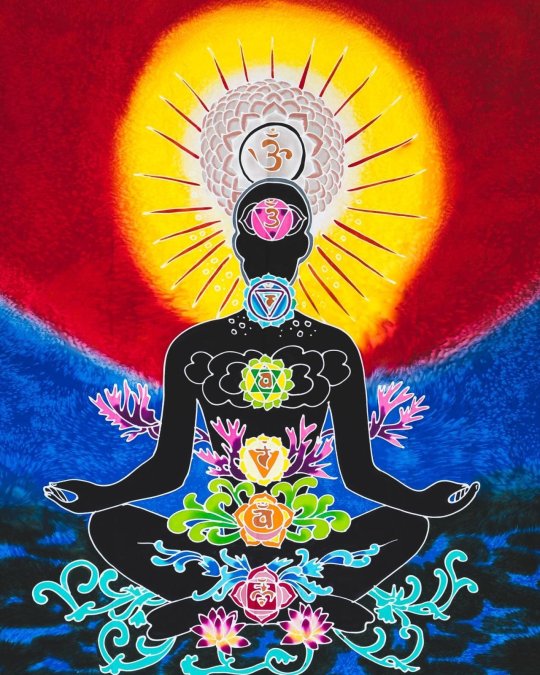

Chakras Root Chakra - Represents our foundation and feeling of being grounded. Location: Base of spine in tailbone area. Emotional issues: Survival issues such as financial independence, money, and food. Location: behind the sacrum bone (here is where the kundalini resides) Color: red Musical note: C Function: vitality to the physical body (life force) Gemstones and Crystals: Smoky quartz, garnet, alexandrite, ruby, agate, bloodstone, onyx, tiger’s eye, rose quartz, hematite (magnet) Physical body affects: adrenals, kidneys, spinal column, colon, legs, bones Aspects: survival instincts, good self-image, and our ability to ground ourselves in the physical world, material success, stability, individuality, courage and patience; main aspect is innocence, this innocence gives us dignity, balance, a tremendous sense of direction and purpose in life. Blockages: paranoia, insecurity, and a feeling of being out of touch with gravity Too Open: dishonest, bullying, hyperactive, defensiveness Essential oils: (those coming from the root or trunk): juniper, frankincense, sandalwood, cedar wood, vetiver, tea tree, rosewood Sacral Chakra - Our connection and ability to accept others and new experiences. Location: Lower abdomen, about 2 inches below the navel and 2 inches in. Emotional issues: Sense of abundance, well-being, pleasure, sexuality. Color: red-orange Musical note: D Function: birth, assimilation of food, sexuality Physical body affects: ovaries, testicles, prostate, genitals, spleen, womb, bladder. Attributes: relates to our sexual and reproductive capacity, vitality and sexuality, emotions, desires, pleasure, change, health, family, tolerance, surrender Gemstones and Crystals: Amber, citrine, topaz, aventurine, moonstone, jasper Blockages: emotional problems, sexual guilt, lust and base emotions, when this center is drained of energy (out of balance) it allows diseases like diabetes or blood cancer to occur. Too Open: Sexual addictive, manipulative and excessive behavior Essential Oils: (those that come from seeds): spices and herbs such as cumin, fennel, coriander, sage, clary sage, marjoram Solar Plexus Chakra - Our ability to be confident and in-control of our lives. Location: Upper abdomen in the stomach area. Emotional issues: Self-worth, self-confidence, self-esteem. Color: yellow Musical note: E Physical Body Affects: pancreas, adrenals, stomach, liver, gallbladder, nervous system, muscles Gemstones and Crystals: Yellow Citrine, apatite, calcite, kunzite, rose quartz, iron pyrites, topaz, malachite Attributes: give us our sense of personal power (will power); destiny, autonomy, determination, assertion, personal power, purpose and sight, self-control, humor, laughter; keeping this center in balance helps you to get rid of habits of laziness, gross attachments, and anything that enslaves us. Blockages: sense of victimization, inability to manifest, over emotional and attached love, afraid of being alone Too Open: judgmental, workaholic, lack of humor, anger, addictive behavior Essential Oils: (those coming from fruits): orange, lemon, lime, grapefruit, lavender, chamomile Heart Chakra - Our ability to love. Location: Center of chest just above heart. Emotional issues: Love, joy, inner peace. Color: Bright Green Musical note: F Physical body affects: heart, thymus gland, circulatory system, arms, hands, lungs Gemstones and Crystals: Emerald, Green Calcite, Amber, Azurite, Chrysoberyl, jade, rose and watermelon tourmalines Attributes: ability to express love for self and others, compassion and intuitiveness, unconditional love, balance, acceptance, contentment, oneness with life; when in balance all our worries, doubts, and fears are destroyed Blockages: immune system or heart problems, lack of compassion, suppression of love emotions towards others and even self, or if felt, only for a short time before it is withdrawn; fear and rage, feeling stuck and afraid to let new things manifest; feeling unworthy, self-pitying and fearing rejection Too Open: an over stimulated heart chakra can result in a ‘bleeding heart’ and possessiveness. Essential Oils: (those that come from leaves) peppermint, eucalyptus, rosemary, pettigrain, lavender Throat Chakra - Our ability to communicate. Location: Throat. Emotional issues: Communication, self-expression of feelings, the truth. Color: sky blue Musical note: D Physical Body Affects: thyroid, parathyroid, hypothalamus, throat, mouth Gemstones and Crystals: Lapis, Lazuli, aquamarine, sodalite, turquoise, sapphire Attributes: directly tied to creativity, communication, sound, logic and reason, truth, gentleness, kindness, reliability. When balance the heart is then aligned with what is in your head Blockages: laryngitis or sore throats, creative blocks or general problems communicating with others; rigidity, prejudice, and an inability to accept other people’s views Too Open: Over-talkative, arrogant, self-righteous Essential Oils: geranium, frankincense, cypress, tea tree, and lavender Third Eye Chakra - Our ability to focus on and see the big picture. Location: Forehead between the eyes. (Also called the Brow Chakra) Emotional issues: Intuition, imagination, wisdom, ability to think and make decisions. Color: Indigo (deep purple) Musical note: A Physical Body Affects: pituitary gland, pineal gland, left eye, nose, ears Gemstones: amethyst, purple Apatite, Azurite, Calcite, pearl, sapphire, blue and white flourite Attributes: seat of intuition, awareness, and inner wisdom, clairvoyance, imagination, ability to perceive truth in the world, analyze, think, and reason; peace of mind, forgiveness Blockages: can manifest as sinus and eye problems, wish to control others, egotistical Too open: Impatience and authoritarian Essential oils: lavender, vanilla, chamomile, neroli, ylang ylang (alcohol and tobacco will impair this chakra) Crown Chakra - The highest Chakra represents our ability to be fully connected spiritually. Location: The very top of the head. Emotional issues: Inner and outer beauty, our connection to spirituality, pure bliss. Color: White Musical note: B Physical Body Affects: vitalizes the upper brain (cerebrum) Gemstones: diamond, white tourmaline, white jade, snowy quartz, and Celestite Attributes: highest spiritual consciousness, personal expression, connection to the source of love, to God, divine wisdom and understanding, gives us direct and absolute perception of reality on our central nervous system. Blockages: can manifest as emotional problems, feelings of alienation and condemnation Too open: psychotic or manic depressive, frustrated. Essential Oils: rose, jasmine
106 notes
·
View notes
Text
Top Scents that attracts Men

Vanilla
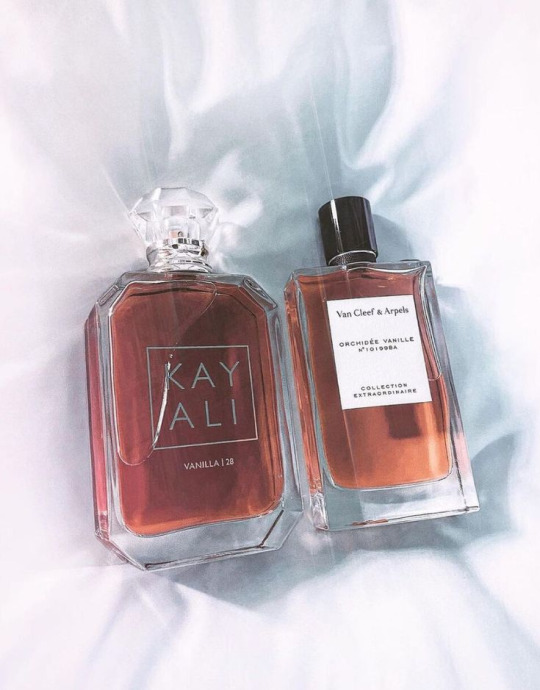
Probably the most universally known scent that is desirable to all. Its scent has been shown to increase arousal by 9 percent in men.
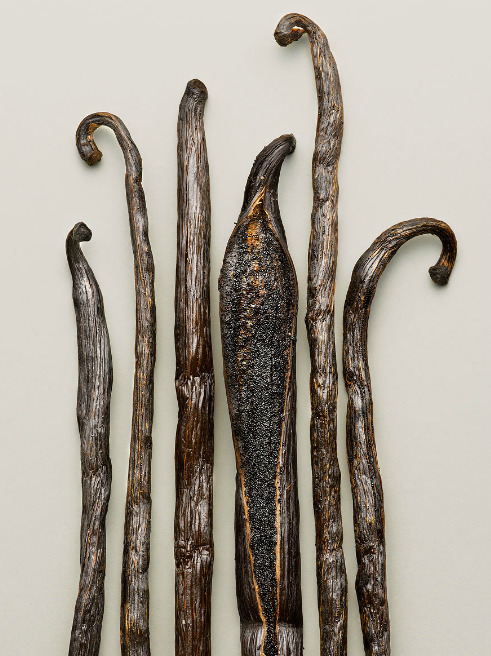
2.Pumpkin Pie

Pumpkin Pie scent increases penile blood flow in 40 percent in men. The scent of pumpkin pie mixed with Lavender increased blood flow to the nether regions by 40 percent when sniffed, Also the smell of pumpkin pie mixed with the smell of doughnuts increased blood flow by 31.5 percent.

3. Lavender

Lavender is also known as the 'herb of love' and has been used to entice men for centuries. It would have been rubbed over womens bodies.
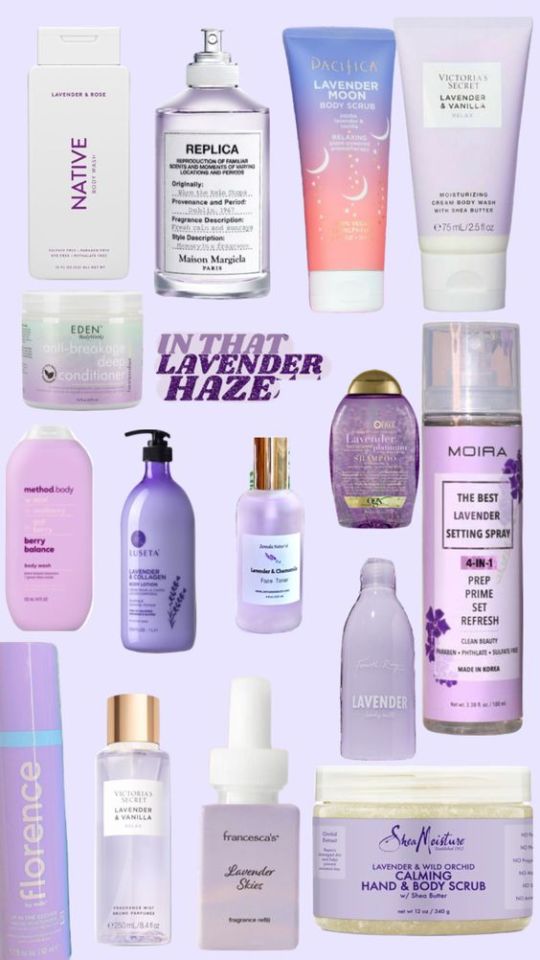
Strawberry

In one study, the sweet scent of strawberry increased arousal in people who were told the smell had the same affect.
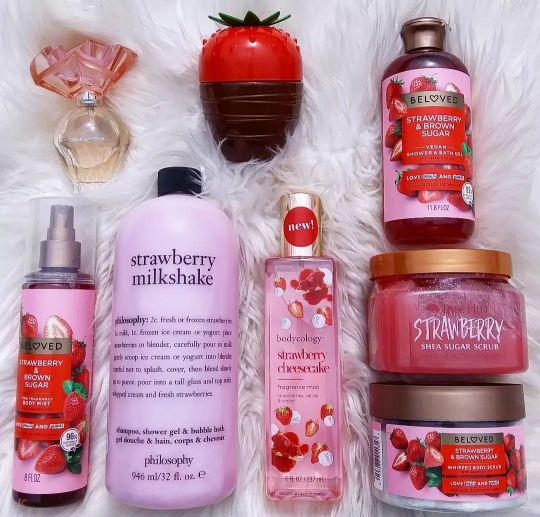
Jasmine

In Hindu and Muslim Traditions, Jasmine is known as the perfume of love. This scent is claimed to be the one strongest aphrodisiacs out there.

Lily of The Valley
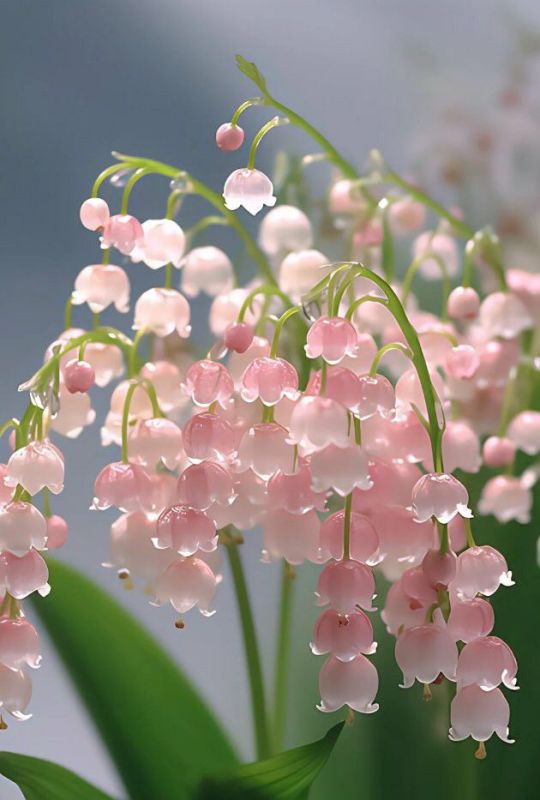
A study found that the scent heightened arousal in men by 11 percent and said to make women more likely to get pregnant when wearing it during intercourse.
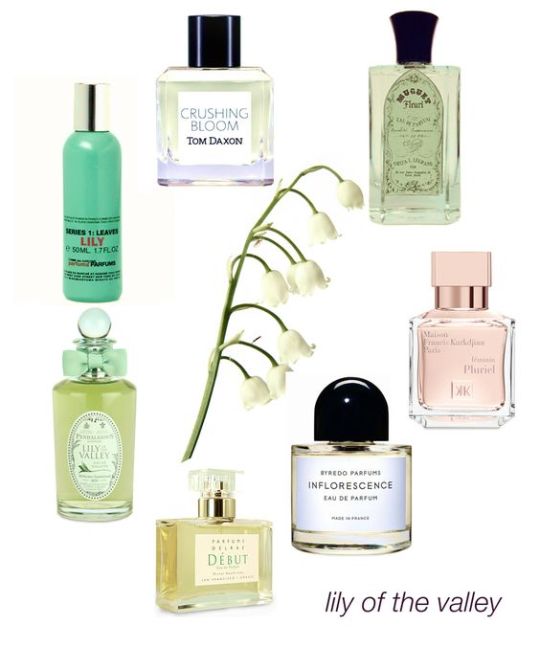
Ginger

Ginger has been used throughout history as an aphrodisiac. Ginger essential oil has been found to be energising and uplifting. A recent study of Chinese folk medicines found that ginger acts as a circulatory stimulant and that it can aid in erectile dysfunction.

Black Licorice
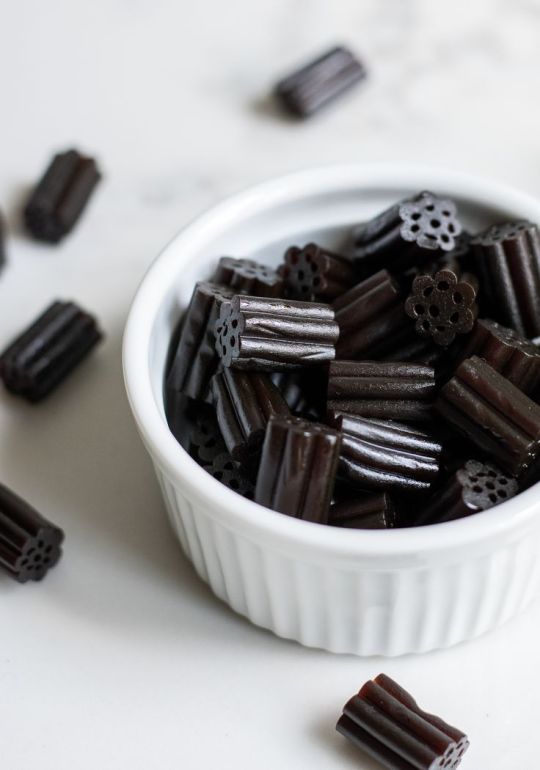
The smell of this candy has been shown to increase arousal in men by 13 percent, when combined with the cent of doughnuts that number jumped to 32 percent. The sweet smell. which comes from anise has been rumoured to work on arousing women as well.

Cinnamon
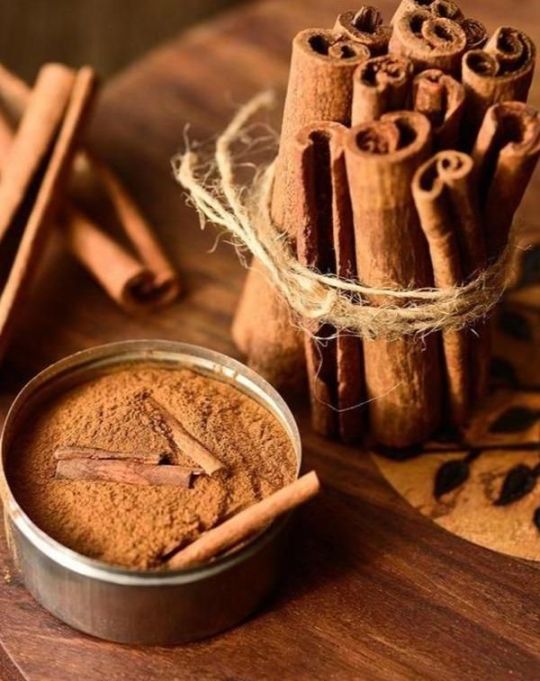
Cleopatra is reputed to have used a special blend of cardamom, cinnamon and rose oil to bewitch Mark Anthony. Cinnamon has been proven to activate arousal in animal studies. Its a scent know to attract both men and women.

Doughnut
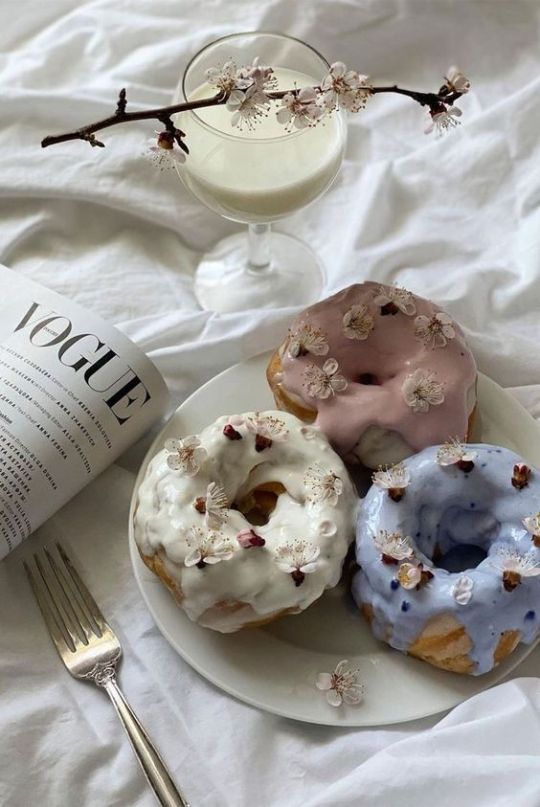
The smell of doughnuts on its own increased blood flow to the groin by only 7 percent, but the scent of doughnuts mixed with black licorice increased blood flow by 31 percent. Mixed with lavender, the doughnut smell increased blood flow by 18 percent anf mixed with cola it increased by 12 percent,
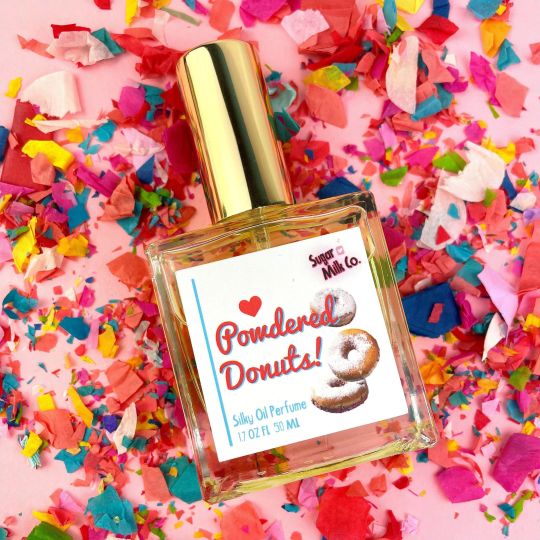
Pink Grapefruit
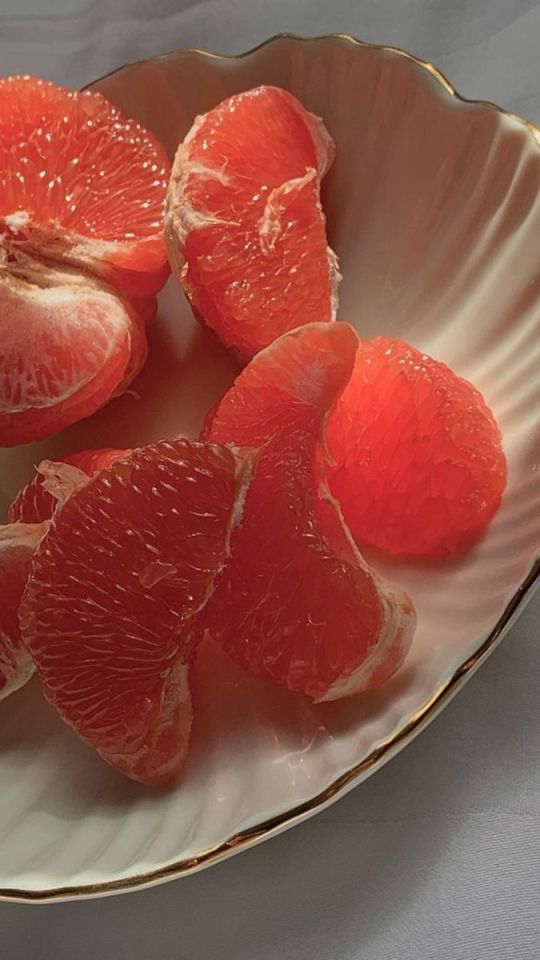
Studies show that women who wear the scent of pink grapefruit are perceived to be 6 years younger on average and therefore more attractive to men.

Roses

Rose scents has been used throughout time for medicinal reasons, and to boost confidence, fertility and libido. Ayurvedic practitioners will also tell you that it helps regulate the nervous system. making people more responsive to touch.
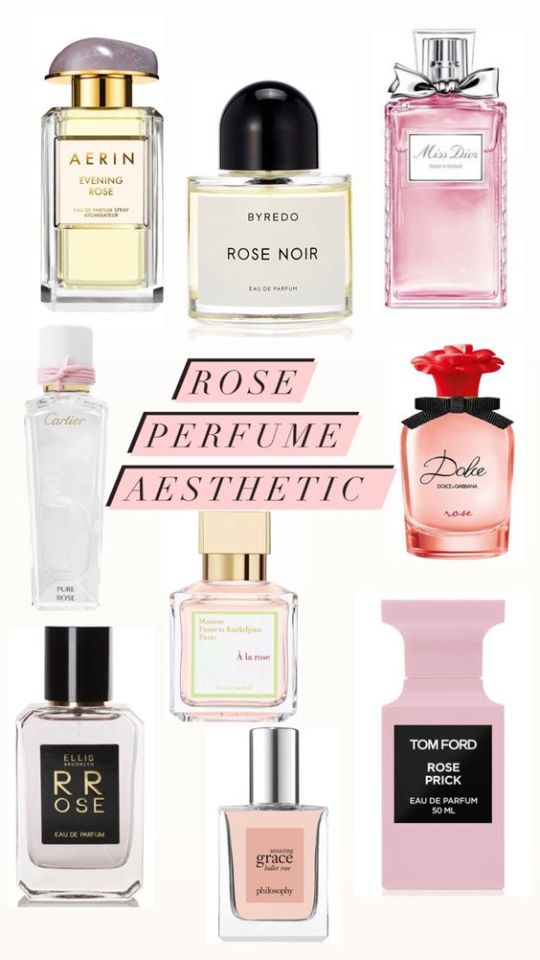
Peppermint
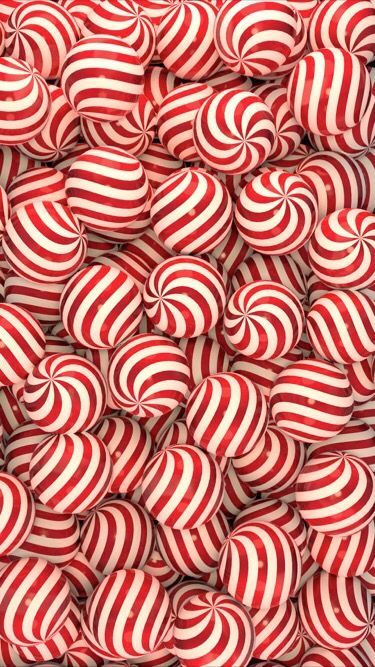
Peppermint has been found it as an aphrodisiac for women increasing alertness, stimulating the brain and dilating the blood vessels in the sexual organs.

Sandalwood

Used in Eastern Indian Ayurvedic medicine, Sandalwood has often been used as an aphrodisiac. Recent studies back up these claims showing that sandalwood elevates the pulse and exhibits the pulse and antidepressant and relaxing qualities.
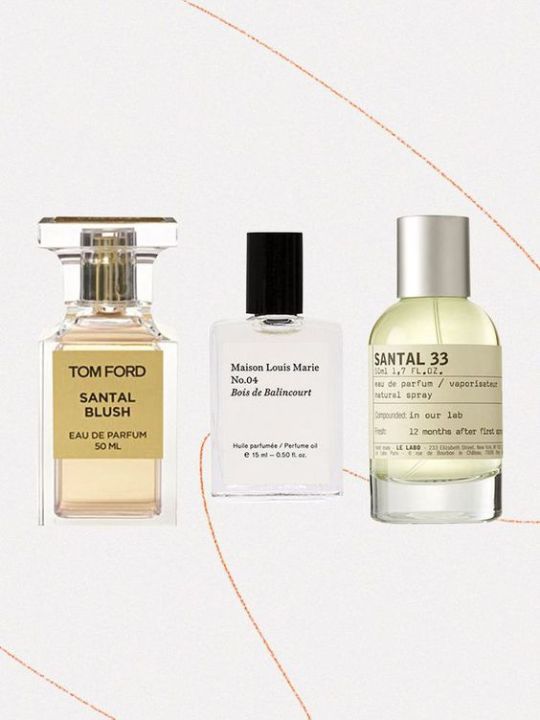
Orange
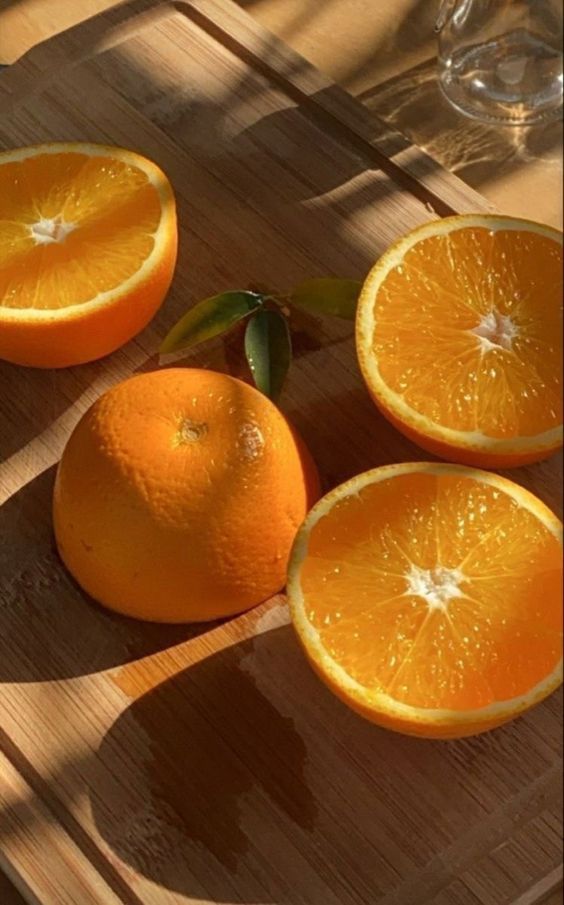
Orange is another scent thats proven to increase blood flow to the sexual organs testing at 19 percent. The smell of citrus has been shown to increase alertness.
#aphrodisiac#smell good#perfume#aesthetic#vanilla girl#vanilla extract#parfum#scent#ginger#orange#doughnuts#licorice cookie#peppermint#lily of the valley#pumpkin#pumpkin pie#christmas#prettyaddict14#beauty tips#eau de parfum#vanilla ice cream#beauty routine#body odor#divine feminine#femininity#self love#self confidence#attract love#girlblogging#femininity tips
39 notes
·
View notes
Text
Essential oils toxic to dogs
Dogs can also be sensitive to certain essential oils, and exposure to toxic oils can cause various adverse effects. Here is a list of essential oils that are generally considered toxic to dogs:
Tea Tree Oil (Melaleuca oil)
Pennyroyal Oil
Wintergreen Oil
Pine Oil
Clove Oil
Eucalyptus Oil
Citrus Oil (Lemon, Orange, Grapefruit)
Cinnamon Oil
Thyme Oil
Peppermint Oil
Oregano Oil
Ylang Ylang Oil
Bergamot Oil
Sweet Birch Oil
Garlic Oil
Garlic Extract
Onion Oil
Onion Extract
Nutmeg Oil
Anise Oil
Juniper Oil
Mustard Oil
Citronella Oil
Pine Needle Oil
Bay Leaf Oil
Cassia Oil
Cajeput Oil
Lemon Grass Oil
Geranium Oil
Just like with cats, this list is not exhaustive, and there may be other essential oils that could be harmful to dogs. It's important to exercise caution and keep these oils and any other potentially toxic substances out of your dog's reach.
If your dog has been exposed to an essential oil or is exhibiting any concerning symptoms, it's recommended to contact your veterinarian for guidance and assistance.
#essential oils#Essential oils toxic to dogs#witchblr#witchcore#witchcraft#witchlife#white witch#beginner witch#witch tips#grimoire#essential oil tips#Essential oil basics#dogs#spirituality#book of shadows
208 notes
·
View notes